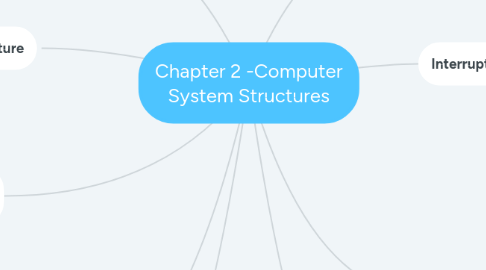Chapter 2 -Computer System Structures
by TAN YIING SWEE


1. Synchronous I/O Structure
1.1. control returns to user program only upon I/O completion.
1.1.1. wait loop
2. Asynchronous I/O Structure
2.1. control returns to user program without waiting for I/O completion.
2.1.1. System call
3. Storage Structure/Storage Hierarchy
3.1. Main memory
3.2. Secondary storage
3.3. Organized in hierarchy
3.3.1. Speed
3.3.2. Cost
3.3.3. Volatility
3.4. Caching
4. I/O Protection
4.1. All I/O instructions are privileged instructions; user program cannot issue I/O instructions directly.
4.2. ensure that a user program could never gain control of the computer in monitor mode
5. CPU Protection
5.1. Timer
5.2. Load-timer is a privileged instruction
6. Computer-System Operation
7. Interrupt Handling
7.1. 1. device controller causing interupt
7.2. 2.CPU transfer execution to interrupt vector table
7.3. 3. interrupt vector provide address of ISR for interrupting device
7.4. 4. OS preserves the state of CPU
7.5. 5. interrupted computation resumes after inerupt serviced
8. Dual-Mode Operation
8.1. User Mode(1)
8.1.1. user program
8.1.2. certain areas of memory are protected from user access
8.1.3. certain instructions may not be executed
8.2. kernel mode(0)
8.2.1. monitor
8.2.2. privileged instructions may be executed
8.2.3. protected areas of memory may be accessed
9. Memory Protection
9.1. must provide memory protection at least for the interrupt vector and the interrupt service routines.
9.2. two registers are used to determine the range of legal addresses a program may access:
9.2.1. Base register
9.2.2. Limit register

